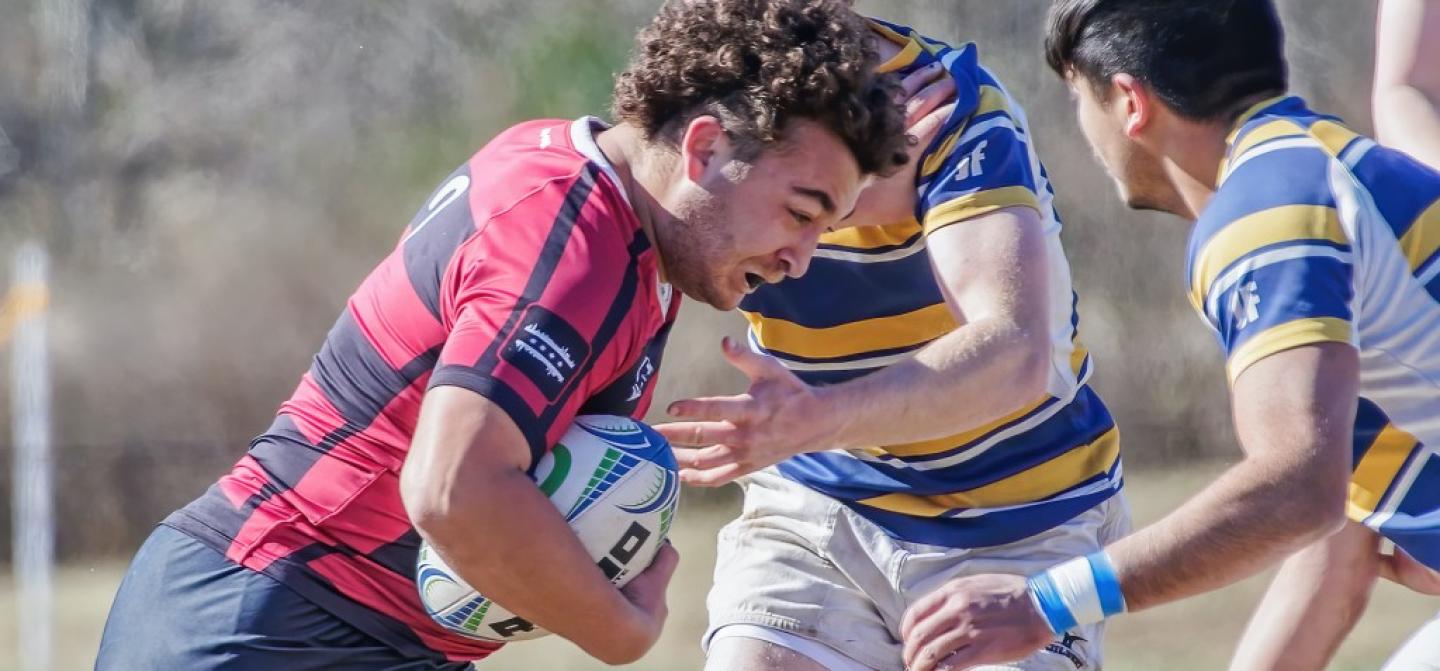As we mentioned last week, the men’s D2 college playoff picture is a lot more open to student-supported club teams this year.
The last few years of play have led to NCR taking a fairly strong stand on school-supported teams and teams from colleges with large enrollments, saying they need to compete in D1AA or D1. Given that the last four national D2 champions and 10 of the 16 semifinalists could be considered large-school or school-supported teams, you can see why they there was a call for NCR to do something about it.
So the 100 or so Men’s D2 teams are almost entirely (but not quite) self- or alumni-funded. We take a look at a small number of contenders this year and wonder if they could be the first D2 champion under the new definition.
The Outlier
One of the school-supported teams that remains in D2 is Norwich. A small military college in Vermont, Norwich only has an undergraduate enrollment of about 2,100, of which about 1,500 are male. So while their men’s rugby team is labeled as varsity and is supported by the school, their size and the fact that all of their other sports participate in DII or DIII conferences means Norwich is probably where they should be.
This year the Cadets are looking at a blissfully challenging NEWCRC. The conference has realigned with a couple of teams moving to the small-college division and University of Maine coming into D2. The result is an eight-team conference that won’t be split into divisions. All eight teams play the other seven in a straight seven-week schedule. It’s a tough schedule that will require discipline, depth, and resilience to get through. Vermont, UMass Lowell, Boston University, Coast Guard, New Hampshire, and Bentley all provide stern tests.
And with some key graduations there are some questions with the Cadets.
Norwich graduated 20 players, including seven starters and probably led by flyhalf and captain Leo Clayburgh as well as the always dangerous Rashawn Fraser and powerful Will Moulton. But last year’s sophomore class will now be juniors and could produce for Head Coach Bob Weggler a savvy, well-drilled group for the next two years. Marius Edwards leads a leadership group that will have the Cadets ready to play, and the big thing about this program is they usually can reload pretty well, and never back down from a challenge. After a scrimmage win vs the Mad River men’s club, Norwich plays Bishop’s University out of Canada this week followed by a development XV from West Point.
And then it’s into the buzzsaw of the NEWCRC, potentially the most competitive conference in D2. If they get out of that hardened but healthy, they could be a handful in the playoffs.
The Upstarts
With due nods to Northern Iowa, Marquette, and Wisconsin Whitewater, perhaps the team to watch out of the Great Midwest is Loyola. Yes Marquette won the GMW, and Loyola finished 3rd in that conference behind Northern Iowa, but it was Loyola that ran through the playoffs and made the top four. They were stopped there, but learned a lot. They only graduated maybe four players and bring back a veteran group. They are bringing in some Chicago Hounds MLR players to bolster the coaching staff, including former Saint Mary’s All American Sean Yacoubian.
Not only are they drawing in more players, but those players are more committed, said Head Coach Sal Carfagno. Former hockey player Ben Payne has emerged as a leader at scrumhalf. He has worked enormously hard on his skills, and brings an intense mentality to the site. Their loose forwards a very good.
Also, it’s interesting to note, that Loyola is not a school-supported team or one flash with funding, but they have recruited successfully using the Next Phase Rugby app because, Carfagno told GRR, it allows the team to connect with high school players all over the country and open their eyes to the academic and rugby potential of a very well-regarded institution.
It's worth noting, by the way, that the Great Midwest has a history of seeing the team that didn't win the conference go deep in the playoffs.






















